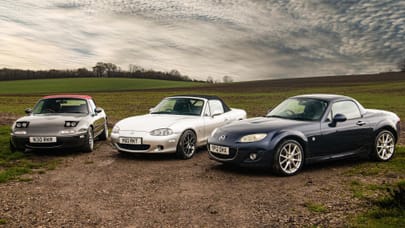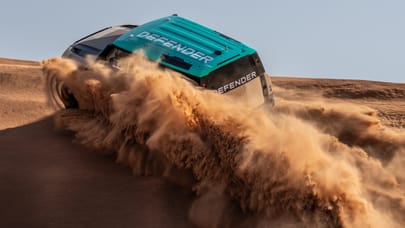
From the archives: driving the 2008 Dodge Viper ACR
A throwback to the time TG got to grips with a proper American psycho - the 600bhp Dodge Viper ACR
There's a war going on in the US right now. It’s got nothing to do with bombs and guns – but everything to do with firepower.
While all the US carmakers are rushing to get small, economical cars onto their dealer lots as oil prices spurt to over $100 a barrel and house prices plunge from their all-time highs, two of them are still locked in mortal combat to produce the most heinous, fire-breathing production car on the planet.
In the blue corner we have GM’s 2009 Chevrolet Corvette ZR1. This range-topping supercharged 6.2-litre missile bristles with carbon fibre – bonnet and roof are now all the woven black stuff – and has a top speed only a Bugatti could beat. It’s so fast they’ve had to rework the speedo so it now reads up to 220mph instead of the standard car’s 200.
Images: Anton Watts
This feature was first published in Issue 175 of Top Gear magazine (2008)
Boasting more power than NATO, the ZR1 (codenamed Blue Devil) also threatens to pull your face off in the corners by generating almost as much sideways gravity as a fighter jet. You’ll be able to see exactly how much on the Top Gun-style head-up display – when you’re not blacking out from the acceleration.
It’s got plenty of other trick bits, too. A bigger, stronger clutch so you can do bigger, longer burnouts. A six-speed close-ratio gearbox instead of the standard car’s arm-length throw, and carbon ceramic brakes, just like the Corvette Le Mans cars. It even has suspension you can adjust to track-level stiffness from the comfort of your heavily bolstered seat.
So, it seems fair to say, it’s going to be a fearsome thing when it arrives in late 2008. Skylines, Ferraris, Lamborghinis... nothing will be safe when the $100,000 ZR1 hits the streets running. Least of all the poor old Dodge Viper, you’d think.
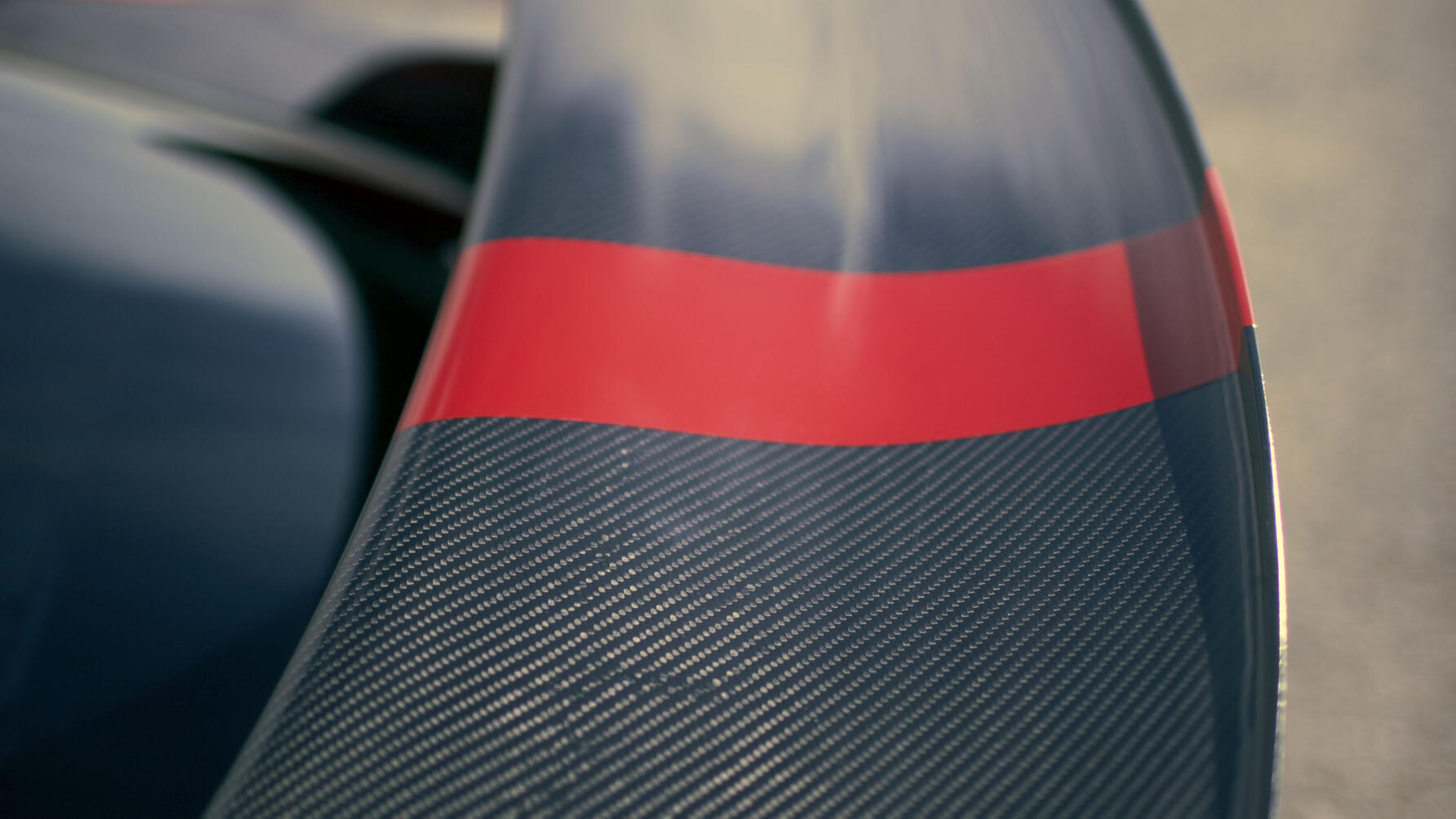
How on earth could the big Dodge beat the ZR1’s Star Wars spec sheet? I mean, it’s great fun smoking the tyres on the big Viper but it’s hardly a 21st century device is it? It’s still got a steel chassis and it hasn’t got any carbon fibre anywhere, for heaven’s sake. It’s about as modern as a battering ram.
Well, OK, it’s not the cutting edge, but the red corner has added a couple of new tricks – and, yes, some carbon fibre – to the Viper playbook. And it’s confident its new $98,000 car, the ACR, can still take the fight to the new ’Vette. It’s not quite pitchforks versus lasers as, for all its trick techno bits, the ZR1 is still also a big, pushrod-engined car at heart. But it’s not far off.
So why do the Dodge people seem so confident? Well, for a start, despite the Corvette’s Le Mans success and apparent technological lead, in Z06 form, the Viper SRT-10 is the faster, better handling car. In all comparison tests, the Viper has covered the quarter mile, the dash to 60mph and cornered faster than the ’Vette Z06 could manage. That’s why.
The how is a little more technical, but not much. The Viper is wider, lower, longer and, despite appearances, has a seven-inch shorter wheelbase than the ’Vette. The big Dodge might tip the scales a couple of hundred pounds heavier than the Chevy, but then its engine is a battle-ready 8.4-litre V10 that fires 600hp to the rear wheels. The Corvette Z06 has to make do with a relatively weedy 7.0-litre V8 that can muster a mere 505hp to torture the rear tyres.
That’s in standard form. In ZR1 spec, the ’Vette trumps the Viper’s power by a comfortable margin. So that should make it quickest through the quarter and in a straight line. And the new suspension should shave a few tenths off its lap times, so maybe it’ll get a little closer in the corners, too.
Top Gear
Newsletter
Thank you for subscribing to our newsletter. Look out for your regular round-up of news, reviews and offers in your inbox.
Get all the latest news, reviews and exclusives, direct to your inbox.
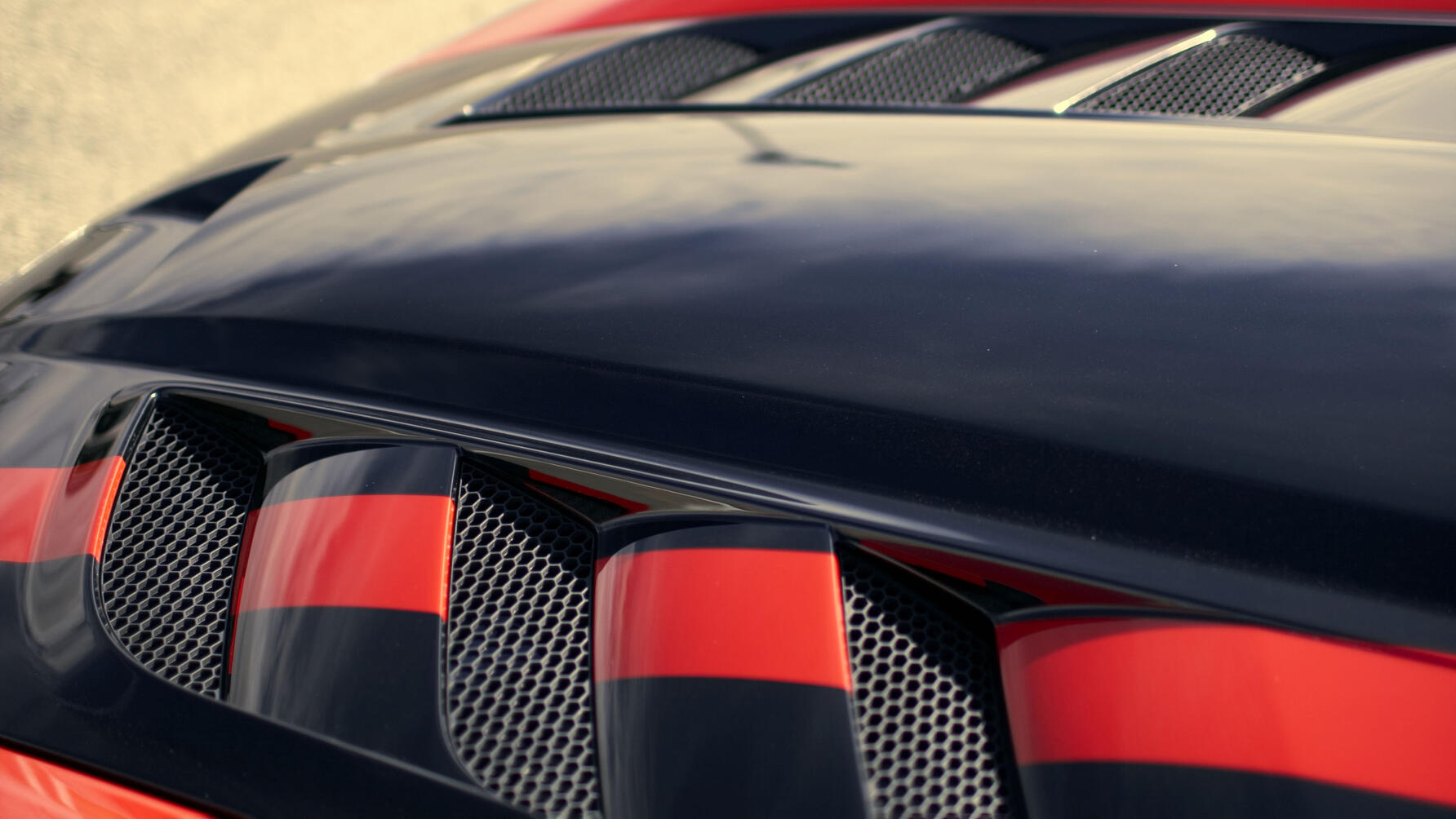
But now that Dodge has fired back with the ACR – that’s short for American Club Racer – maybe it won’t. The new Viper’s engine remains as stock, so the big ’Vette might win the straightline battle, but it’s doubtful it’ll win the lap-time war because this Viper ACR, the third since 1999, is packing some serious handling heat under its bodyshell.
As Chief Viper Development engineer, Herb Helbig, said when he showed us around the prototype ACR: “It’s going to take a bit more than just putting a supercharger on the Corvette to make it beat this.” As we’re going to discover, he’s not wrong.
Designed to be the kind of car you can drive to the track, thrash against your mates, then drive home again, the ACR turns the already uncompromising Viper into a just-add-numbers racer for the road. It’s lighter, better handling, faster stopping and more outrageous than it’s ever been before. Perfect.
It weighs in 40lb – half a tank of petrol – lighter than the standard car, thanks to lighter tyres, wheels and brakes. But it can shed another 40lb with the optional Hard Core package in place. That deletes the audio system, underbonnet sound-proofing, boot carpet and tyre inflator, replacing them with a lap timer and some carbon-fibre panels. It also brings the weight of the car to within an ace of the weight of the ZR1, cancelling out the ’Vette’s bulk advantage.
But, rather than making the ACR’s top speed higher, the rest of its new bits are designed to make the car quicker around a track than along the drag strip. Instead of messing with the engine, which they reasoned makes more than enough power, the Street and Racing Technology team worked on improving the Viper’s grip, to make more of the power useable more of the time. This involved night after night in the windtunnel – after the Dodge NASCAR team had finished with it – subtly reworking the Viper’s shape to increase its downforce.
Rather like the Ferrari Scuderia, the final shape they emerged with isn’t that much different from the standard car’s form, but the differences in performance are significant.
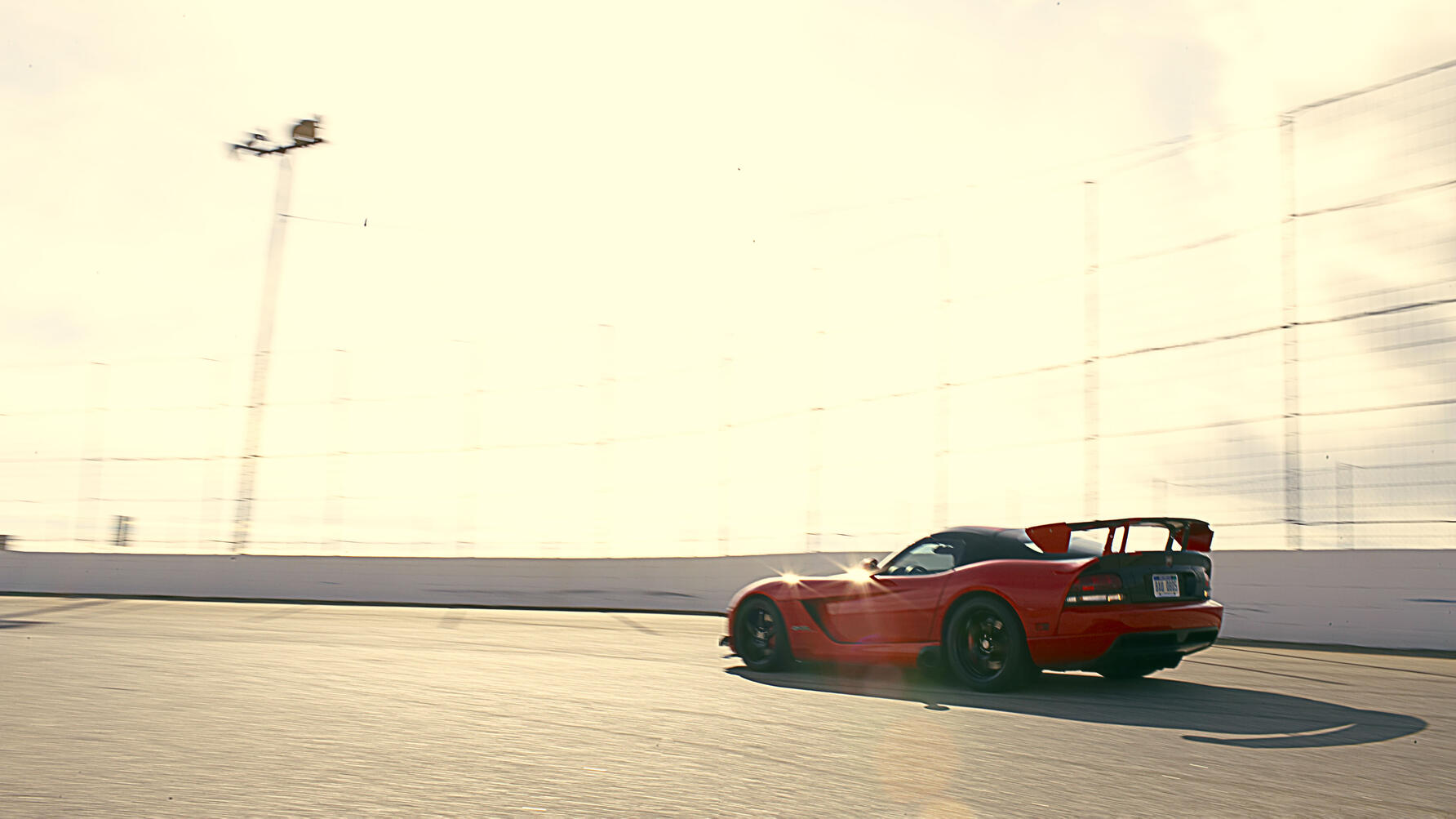
Where the standard Viper generates about 100lb of downforce at 150mph (which is better than the majority of big sports cars – most generate lift at speed) the ACR makes 1,000lb of downforce at the same speed. What that means is that, when the car hits naughty motorway speeds, an invisible baby elephant appears on the roof of the car and squashes it into the road.
This allows the Viper to corner at previously unthinkable, spin-off-and-die speeds. even though the team were still doing final tests on the aero kit, which involves an adjustable depth front ‘fanged’ splitter, a good sized rear spoiler and all manner of bodywork tweaks, they reckoned they were seeing around 1.5g of lateral, lunch-loosening g in fast corners.
What allowed them to come back and tell us that fact is the new suspension. Supplied by KW Suspensions and tuned specifically for track performance, the ACR’s set-up is adjustable for damping and ride height without removing the wheels. It’s a long way from the convenience of the Corvette’s push-button system, but then it’s a lot more serious, too.
The brakes are remarkably similar, though. Both have huge carbon ceramic brakes that are almost the same size as the wheels, and calipers the size of toasters. So you can expect similar, freeze-frame style, get-your-eyeballs-off-my-windscreen braking performance from the pair of them.
Well, I say you can expect it for both of them. While we are going to have to find out later how the ZR1 drives, I’m going to know about the ACR in less than one minute as I’ve just heard the car bellow noisily into life in the garage behind me. That means it’s my turn to thrash it – there is only one car, so no pressure – around the track here at Willow Springs in the desert above LA.
As I pull on my gloves, the clear blue sky suddenly darkens, the wind picks up and I feel a few drops of rain on my face. Oh great. I look at the ACR’s cut-slick Michelin Pilot Sport Cup tyres, remember the 600bhp output and swallow hard. The invite said to bring a fire suit and helmet. But I didn’t get the invite, so I turned up in jeans and sunglasses. Hmmm.
No time for second thoughts now, though. Strapped into the car in a four-point racing harness, all the trademark Viper cues are there. Cramped cabin, check. Just see over the steering wheel, check. Earthquake exhaust note, check. Heart rate over 150bpm, check...
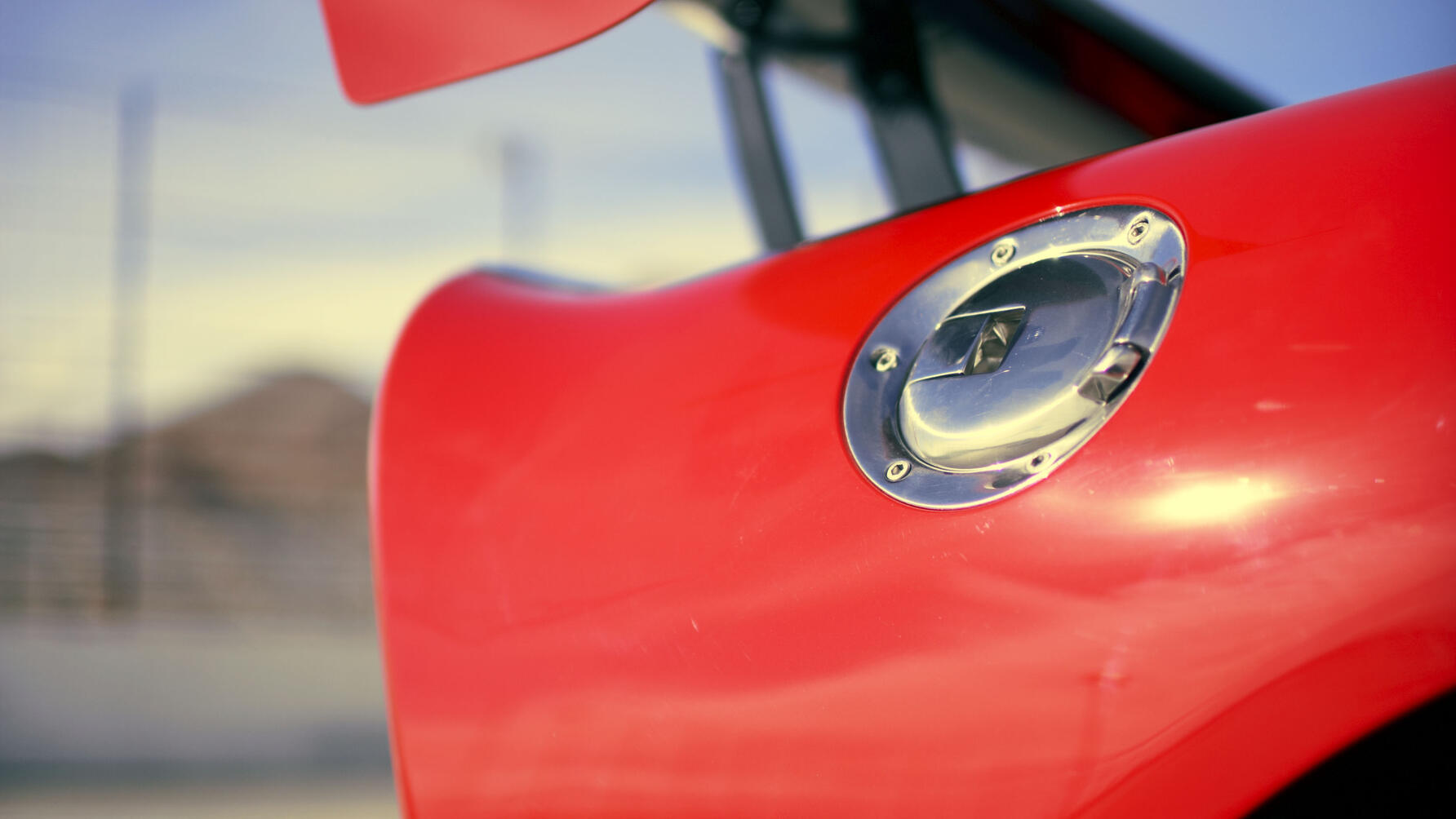
As I fiddle nervously with the few controls that are left in the cabin after the Hard Core boys have done their deleting, Herb Helbig leans in through the netting window, pulls the cigar from his mouth and shouts at me: “Just remember that the tyres are cold. And watch the wind out of turn eight.
"Put a wheel off the track there, and your drive is over. D’ya hear?”
Cold. Wind. Off. Over. I nod responsibly, then jam it into first and blast off down to turn one, like you do when you’re in a 600bhp race car. But like you probably shouldn’t in a 3,300lb Viper on cold tyres.
Before I go any further, I should explain that a Viper has the laziest power delivery this side of a water wheel. As the road speed soars, the engine note hardly changes. Add to this the wide-spaced gears, two of which are largely unnecessary due to the endless amount of torque and, despite its ferocious appearance, it is a strangely relaxing car to drive fast.
Which is my excuse for why I’ve just arrived at this first left hander 30mph quicker than I probably should have. I think about panicking but there isn’t time, so I just hit the brakes, slip it down a gear – more to use the new slick shifter than for any need – throw it in and get back on the gas. The ACR is not in the slightest bit bothered.
So I do it again in turn two, a double apex right, and the Viper just sticks and goes. Turn three, a tight uphill left hander that flicks right at the top of a small hill into turn four. It would be a challenge for any car to keep itself together through this, particularly a big fella like this Viper. But it’s not even vaguely upset by it. Turn five, easy. Turn six, a blind crest onto the back straight, not an issue. Turn seven, really just a kink, like it’s not even there. But then comes turn eight. This has to be one of the fastest corners on any non-oval track in the US. A tightening radius right, I’ve driven a couple of cars around here that have tied themselves in knots – along with my guts – trying to get though and out of it cleanly. If anything was going to go wrong in the ACR, this was going to be the place.
Needn’t have worried. Even hopelessly off-line, the Viper can be adjusted with all the ease of something half its size. It’s not quite as easy as an Elise, but it’s several miles better than anything else of this size and power. The steering is meaty and direct. The grip is astonishing and it never seems to lose its composure. Oh, and it’s very, very fast.
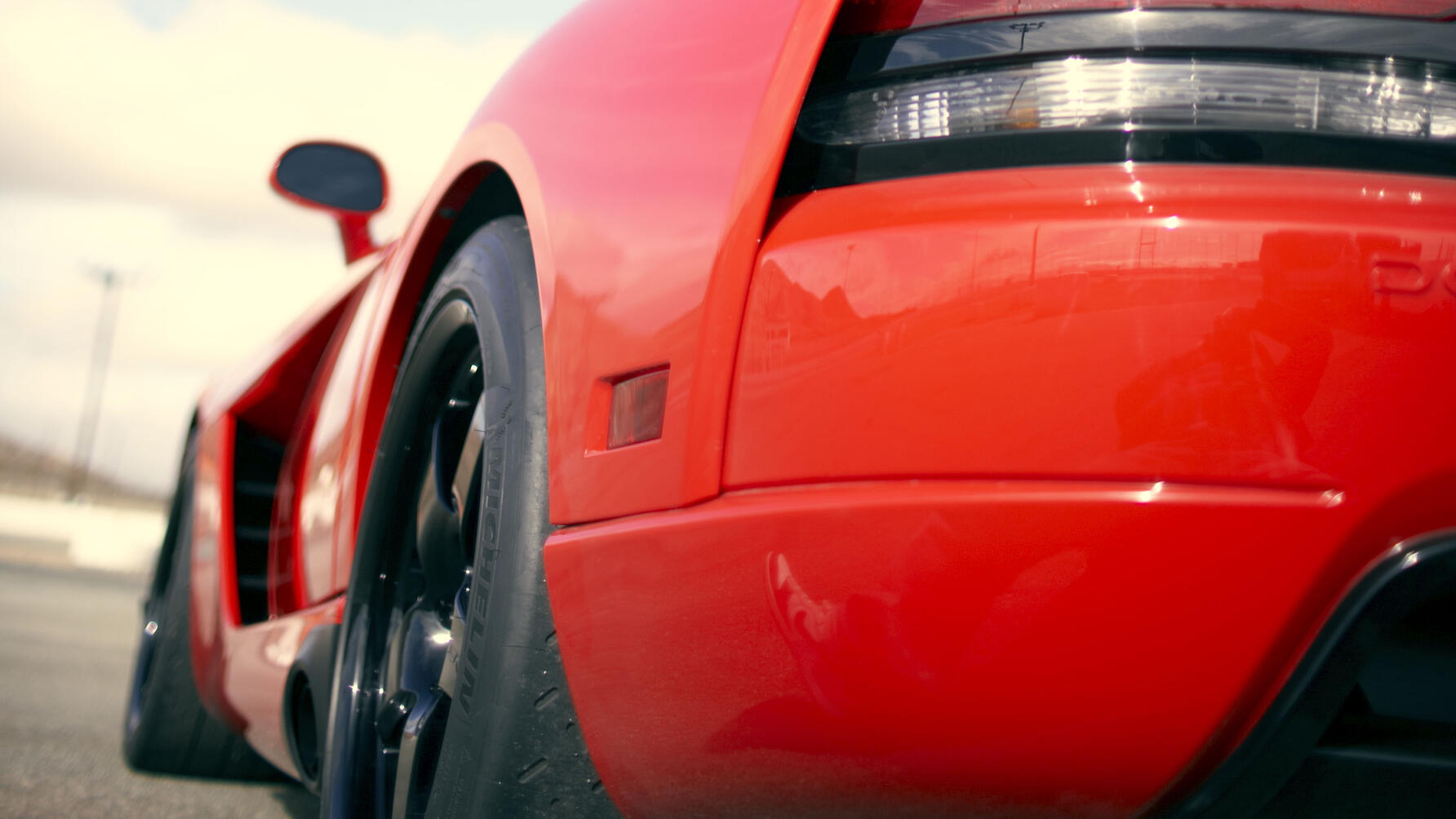
The whole experience was completely different to how I had imagined it would be. Rather than having to rough handle some wheezing old nail around the track, the ACR was fast, smooth and amazingly sure-footed.
Which is the type of car even quite inexperienced petrolheads could buy, drive to the track, race without crashing, then drive home again. And, as that’s exactly what Dodge tried to build with this car, it looks like it’s made a direct hit.
We know the alloy-framed ZR1 is going to be good on the road, and will probably win that battle against the ACR. It wouldn’t be that hard after all. But having driven this big new Viper, I’d say the new ’Vette better have something very special up its wheelarches or this is one war, on the track at least, it could very easily lose.
Trending this week
- Car Review
BMW 1 Series
- Top Gear's Top 9
Nine dreadful bits of 'homeware' made by carmakers






